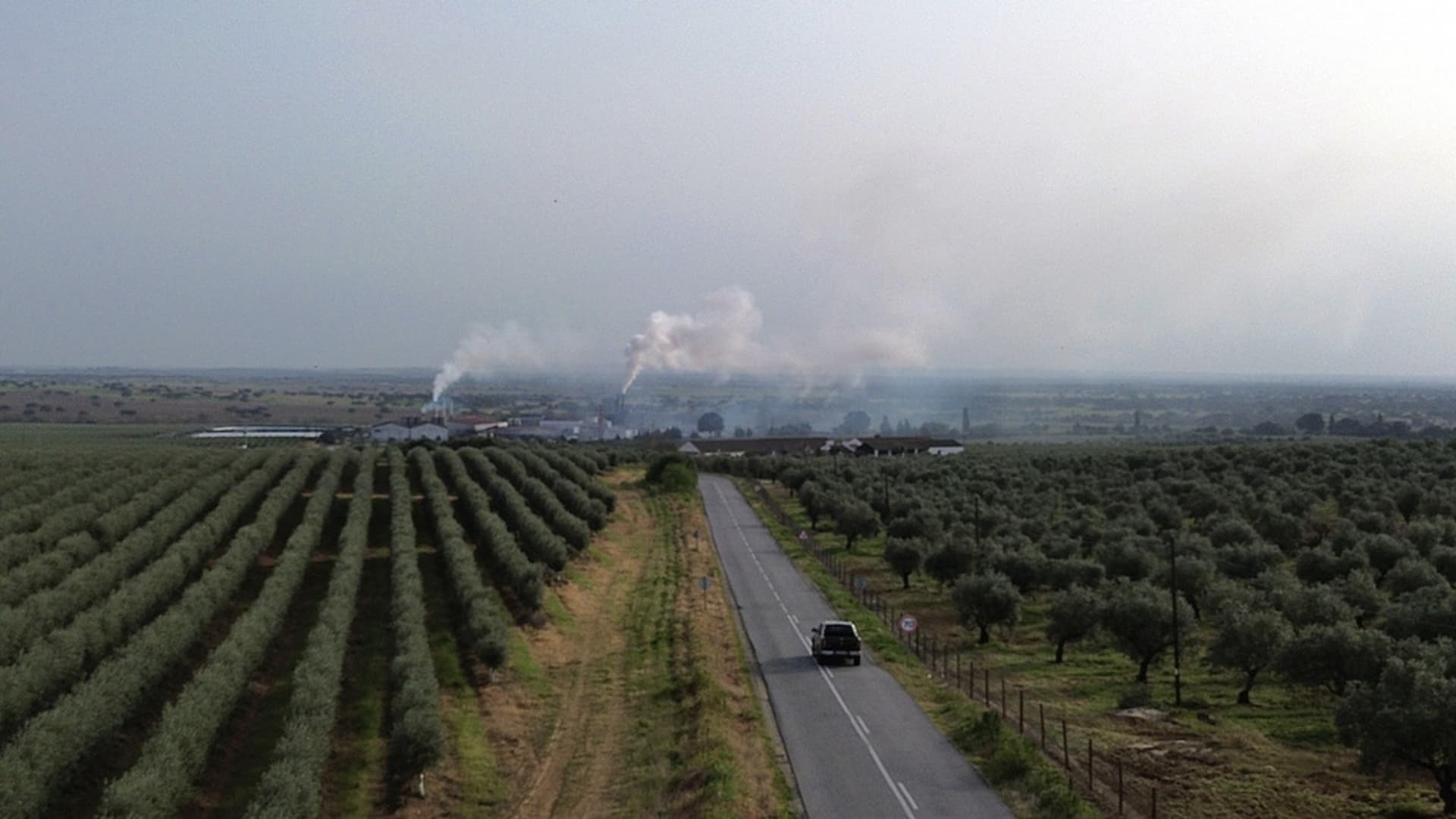Background
During each shoot of field trip, the smoke from the factory was always in the adjacent olive groves, a phenomenon that could be clearly seen with the eye, between the rows of olive trees, where the smoke was so thick that the air felt like it was sticky, invading the mouth and nose and occupying the respiratory tract. How do the olive trees and the various creatures that grow and live in the smoke for long periods of time feel and how are they affected? A concept of stickiness will be presented here to reflect the relationship between them.
Definition of "Stickness"
For this chapter, the speculative link between the concepts is the result of the situation description, suggesting that one can understand alternative possibilities for adhesion relations.
This concept is derived from the temporal and spatial sharing of the particulate matter of smoke with the seasonal flowering of olive trees in the previous chapter section of the study. At the same time, the flowering olive pollen then acts as a force that makes adhesion possible, and the substance pollenkitt again gives it the ability to spread and carry, so that the term adhesion is first introduced in this project.
As the complexity of the relationship between the objects under study has been explored, the meaning it conveys has been constantly updated and refined, and we now seek to elaborate it as a state in which a substance or surface is sticky and adhesive, which describes the ability of objects and surfaces to hold together or adsorb other objects after contact, a state that can be caused by the chemical properties of the substance, surface tension or adhesives, charge attraction, etc. conditions.
In a broader conceptual and semantic sense, the concept of stickiness can be extended to mean the characteristic (property) of something having an appeal, permanence and influence in people's thinking or actions, which implies the ability to generate attention and engagement and have a long-term impact on individuals and groups.
In this project we have highlighted the relationship of stickiness across objects of interest and the use of different visualisations to demonstrate this micro-scale perspective. Stickiness relationships do not only occur in organic matter, but also carry more causal links, so when we focus on the effects of stickiness states on non-human organisms, we find that there is a lack of attention to biological groups in this area. And our work is an attempt to articulate the occurrence of such processes and to offer a new theory of stickiness.
Possibility of Adherence
Typically, olive pollen has a particle size of about 25 µm, whereas the different smoke particles in the air have particle sizes ranging from 0.01 µm to 5 µm, and they are very different in size, thus offering the possibility of attachment relationships. Observation of olive pollen under microscopic electron microscopy reveals a finely striated surface with small pores between the stripes and irregularly shaped rough protrusions on the surface of the particles, with the special structure of spines and ridges providing a vehicle for attachment to other particles.
In addition, pollen grains are covered by an important sticky substance called "pollenkitt", which is produced by the glands in the anther and consists of a mixture of lipids and waxes. Their main function is to provide a lubricating layer between the pollen grain and the stigma of the female flower, making it easier for the pollen grain to reach the stigma and germinate. In addition to this it protects the pollen from water loss and also adheres more easily to insects.Guillermo J Amador et al. published a study on pollenkitt being essential for pollen capture, in which they washed pollenkitt from pollen grains with a special mixture and then wrapped it around the bees (https://doi.org/10.1088/1748-3190/aa5c6e). They observed that the washed pollen did not stick to the bees, and when the pollenkitt was removed, the amount of pollen accumulated by the bees was reduced by a factor of two. This experiment could be taken as strong evidence that pollen adhesion is made stronger by the presence of pollenkitt.
The links between smoke, pollinators, olive trees, flowers ...... all the objects of study are linked by the emergence of pollen as a medium, establishing a new relationship of communication.







